|
If you have a garden pond one thing to consider is local frogs. You may find that each spring frogs visit your pond to breed and the reuslting frog spawn may swamp your pond.
That may be fine if you want a natural pond that attracts local wildlife but not if you want a pristine clean fish pond. But the 21st Century has seen the UK frog population declining and simply throwing the spawn away will not stop frogs using your pond each year though it will not help increase the number of frogs either. These small amphibians, frogs, often fascinate people so it would be sad if they became extinct and after all every creature has its place in this world. Over the last few years the U.K. population of frogs has been hit by disease which has meant a rapid decline in their number. In 2010 a killer virus wiped out thousands of frogs. For this blogger though frogs are alive and well, enjoying life in the city We moved into our current home in 1999. It is in a northern city of Yorkshire in the U.K. The relatively small garden already had a pond in situ which had a small stock of fish and each spring a teaming population of frogs. Throughout the year the frogs would seemingly vanish. Move a plant's leaves in summer though and you were liable to glimpse a frog or even have one jump out at you and in spring each year the frogs would become visible. A veritable orgy would be on going for weeks in our pond, with so much frog spawn that some had to be removed. Following local flooding in 2007 and extensive renovation works of our home it was decided that it would be prudent to fill in our pond. Sadly neighbours had been doing the same for years resulting in more and more frogs filling our garden and pond each spring. On a mild evening the garden was, as far as noise went, reminiscent of the Deep South of the U.S.A. and the frog chorus. Frogs however must have a "die hard “attitude to life. Almost ten years later the frogs are still around. In May 2015 some frogs returned to their proverbial spring home. There may be few ponds locally now but they were looking for a good place to breed and their desire strong. The odd frog was spotted in our garden like the one shown in the image above. Opening the door early in the morning this frog was looking up at me. It had plonked itself in our dog's food dish that had been left outdoors to soak in water overnight. There the frog stayed all day then vanished. Conclusion: We need to put more thought into building city ponds and more importantly into filling them in. Frogs, once they have found a forever breeding ground will return year after year after year to breed. If the U.K. frog population is declining we can all play a part in halting that. For this blogger it is going to be providing a temporary wet area for the frogs to "play". Now March 1, 2017, may be a good day to start that project. Gardener's friend? Make your garden frog friendly Save the Frogs
0 Comments
Garden fencing can be the ideal solution for privacy and security issues in your garden. Fencing can also be a great way to section of various parts of your garden. The right fencing may not only be practical as it can also be attractive.
Before hastily erecting a new fence you will need to check out any local rules and regulations that may be in force and research the options available. With this easy How-To-Guide the perfect fence for your garden is only a few steps away. Building and planning rules and regulations In the UK there are various building rules and regulations and some may apply when you want to erect a new fence. On the whole you do not need planning permission as long as your fence is within a specified height. It partly also depends on how far away from the boundary of your property you are going to erect a fence. Fences or walls that adjoin a road or street have to be lower. As a general rule fences must not be:
The rules may be less stringent than in the UK but it would be as well to check. As a rule fences up to 6ft high are allowed. However there may be some community restrictions based on the possible appearance of your fence. Research your local rules, regulations and by-laws for any variances. Neighbours It is sometimes agreed that the fence or wall at the right of the property belongs to the household whereas the one to the left belongs to the neighbour. However, it is not always that simple. If your neighbour has erected a fence at both sides of his property before you move in you, cannot simply remove it. You will need to seek agreement with all concerned. If you do not neighbour relations may be difficult to say the least. You can erect a fence at your side off the fence which hides the neighbour's fence if preferred. When you are planning your fence consult your neighbours if appropriate. This can ensure that there will be no bad feeling if, for instance, you block off part of their natural light. A neighbour may be happy to share the cost of an adjoining fence as long as it meets with their approval. The purpose of the fence Think about the purpose of your fence. If it is simply needed to improve security it will need to be substantial. If you will need to allow light to pass through you will need a fence that has wood spaced out. Perhaps you want to grow rambling roses or fruit on your fence and so a trellis may be a necessity. There are so many options but it does depend upon your needs. How to plan a fence Once you have done the background work start to plan your fence.
You will need to consider
Tips & Warnings
When this blogger was a kid growing up in 1950s and 1960s Britain many local people had an allotment. Living in an area of town that had small houses with little if any garden space and more than our fair share of bomb sites, green areas were but a dream. Bomb sites where great places for kids to play on but not much use other than that. These days perhaps the waste land would be utilised more quickly but back then with so much rebuilding needing to be done they were just left as waste ground. Anyway so many people had an allotment why bother with waste ground? But perhaps you have no idea what an allotment is. Well let me enlighten you. An allotment is a piece of land that you rent from the local council. The purpose is so that you can grow produce, plants and flowers on it. For those with no garden space at home an allotment could be ideal. These days allotments still exist but can be hard to come by. Your council may have a waiting list. Another sign of the times is that these days your produce may get stolen or vandalised. When I was a kid this did not happen except for the odd cheeky kid who may play a prank. Security fences and locked gates now offer some protection. Each area may have a dozen or so allotments on it. This means that friendships soon follow. Of course the reverse can happen also. On the whole though allotment growers are generally very sociable. There are usually some rules and regulations about what you can put on your allotments. These rules are not usually anything too bad. Most people add a shed to their allotment. Some of these are basic and just offer a potting shed and somewhere to make a drink. However, some are a home from home. Bits and bobs of furniture from around the home may be snatched in order to furnish the allotment shed. At one time it could be the man of the houses' respite away from the wife and kids. These days though couples and whole families may run the allotment. In general each allotment is about 10 rods in size. This is an ancient measurement equivalent to 302 square yards or 253 square metres. This may not sound a lot but you will be surprised how much produce such an allotment can produce. It means some hard work and crop management though, to make it efficient. People from all walks of life, such as nurses, doctors, teachers, IT workers, sales people and factory workers might have an allotment. For many the fact that it is so different to their 9-5 work is part of the attraction. This can make the allotment relaxing as well as rewarding. The outdoor exercise is good also. As people continue to have more and more concerns over shop bought food stuffs, growing your own is an attractive option. Allotment rents are set locally and so do vary. If you are lucky you may pay less than £10 a year. If you are not you may pay £80 or more a year. Allotments are thought to date back thousands of years in the UK. Laws amended rights over the years and not until the early part of the 20th Century were firm rules applied. Allotments came into their own during the First and Second World Wars in the UK. With produce rationed and in short supply many people chose to grow their own fruit, flowers and veg. In the 2nd World War posters advertised allotments and asked people to "dig for victory". In 1950 the Allotment Act offered guarantees that some land would always be available for allotments. However England is a very small country, with an constantly increasing population. A small percentage of the population own a huge percentage of land in the UK-the Toffs! So land is in short supply. Although the decrease in the number of allotments has slowed they are still in short supply. If you live in England and want to rent an allotment check out what is available through your local council. There are also some plots available which belong to the church. Remember to consider the location, for ease of use. For example, if you have no private means of transport an allotment across town may not be ideal. When trying to work out the cost, consider the total amount if you have to start from scratch. In the long run an allotment could save you money, be fun and provide you with healthy produce. In the initial stages there will be some financial outlay. If money is tight create a list and only purchase the essentials to get you started. You may find that others using the same patch of allotments will let you have some seeds once they get to know you. Allotments still tend to be sociable places. http://www.nsalg.org.uk/ http://www.allotment-garden.org/  Aphids can be a huge pain to gardeners, especially during the Summer months. A little good weather and your rose and other plants will soon become the next best meal for aphids. The insects could be blackfly but more often than not they will be greenfly overrunning your flowers or rather stems and buds. They literally suck the life out of plants such as roses so prompt action is vital. These days many people try to steer clear of damaging insecticides and pesticides. Those products can do more harm than good. Encouraging ladybirds in your garden will help beat or even stave off an aphid attack. These little insects will chomp their way through the aphids. However, more often than not the greenfly will outnumber ladybugs almost a million to one, or so it seems. One safe, and quick way to remove greenfly is using a mild solution of washing up liquid. Just a small drop of the liquid added to water in a spray container could do the trick. Shake the solution before spraying so that it is nice and foamy before spraying directly on to any greenfly infestations. Simply spray with water to remove, after a couple of minutes or leave and hose off when you water your garden. Alternatively you can wear gloves and squash these little garden pests but it is a messy job. Once again spray with water to remove any residue. A regular spray with the mild soapy solution should keep your plants greenfly free all summer. Gardeners will always tell you that prevention is better than cure. Just be careful that any anti-greenfly sprays you purchase are eco-friendly too. If you find that a soapy spray is not working well for you try planting garlic and plant close to roses to deter aphids. You can even make a garlic spray to clear greenfly away. “A spray made from as little as a 6-8% concentration kills greenfly, it also keeps beetles and snails off other plants. It keeps greenfly off roses if planted near the bushes" Try the environmentally friendly alternatives before buying expensive and damaging products. If all else fails go back to the squashing greenfly between finger and thumb technique. It takes a little time but hurts nothing but the aphid population. Perhaps more importantly it is free, Why bother?
In tough economic times growing a selection of fruit and vegetables can be cost effective. It can also be easy and fun. You will need
It's easy when you know how Growing your own vegetables has become more popular again, lately. With most people feeling the economic pinch many are looking at ways to save some money. Growing your own potatoes will give you a tastier potato than the shop bought variety, save you some money and is suitable for the smallest of gardens or yards. Like so many things though preparation is the key to yielding a good crop. A little time and effort spent initially will go a long way. Once your potatoes are established they will need the minimum effort on your part. Fresh new potatoes straight from the earth can be easily achieved and are well worth the effort. Where to plant Deciding on the best place to plant your potatoes will depend upon various considerations such as:
Potatoes need to have some shoots showing before they are planted. The practice of encouraging shoots to sprout is called chitting.
Planting in the garden Plant the potatoes in dug trenches that are up to 13 centimetres deep. The exact depth will depend upon the variety of potato. Check the packaging of the potatoes for any specific advice. The space needed between each potato will again depend upon the variety. Once the trenches are dug and prepared with some fertiliser:
Your crop should take about 3 or 4 months to grow and become ready for lifting. A lot will depend on the time of year. For early crop potatoes lifting can take place early in the season. In fact as soon as the shoots showing above the ground are green and in flower. For later crops you can leave the potatoes in the ground, even if the top growth looks well past its best. A couple of weeks before you are going to lift the crop, cut the top growth off at the ground. Doing so helps the potato skin to toughen up. This should make the potatoes less prone to damage as you lift them and extend their shelf life. Tips and advice
It may be hard to believe in the UK as you are getting drenched in the latest downpour of rain but we are often only a matter of weeks away from severe drought.
Managing water stocks is becoming ever more important in the 21st Century. Global warming and climate change means unusual weather patterns. These changes can result in excessively heavy rainfalls in summer and a lack of valuable water during the winter months. The need to conserve water has never been greater. If you are building a new home consider installing a full rainwater harvesting system. Even if your home was constructed many years ago you can still make some adaptations. One of the best ways to conserve rainwater is to harvest it. Harvesting rainwater can help you manage garden water supplies efficiently. This can mean that you have a plentiful supply of rainwater throughout the seasons and the year. Rainwater will not be suitable for drinking water but can be used, for example, to water your garden, clean windows and wash paths. How to harvest rainwater In order to harvest the rainwater which regularly flows away from your roof you will need at least one water butt or barrel. Depending upon the size of your home more than one rain water butt may be appropriate. Most people decide to extend their water harvesting and incorporate a garden watering system which runs from the water butt. What you will need
Rainwater barrels and butts The rainwater barrel or butt can be as simple as you want. In order to minimise costs many people utilise something appropriate which they already own. Making your own water butt can save you money but make sure that it also fulfils its purpose. If you decide to buy a purpose made water butt or barrel check out the alternatives on line. You may want to install a few small versions or just one large water butt. Ask your local council if they are running any environment friendly schemes which enable you to purchase a water butt from them cheaply or even get one for free. Installing a water butt Installing your water butt will be fairly easy but consider:
General advice Did you know that Radishes are classed as one of the super-foods? This small peppery tasting salad vegetable is often maligned and under used but it should be eaten liberally when in season.
What can be most health giving though are the roots and the leaves of these small plants. These are almost always discarded when you prepare radishes for eating by top, tail and washing them. The leaves of the plant though contain more Vitamin-C, protein and calcium than their roots. Radishes contain Vitamin-C, zinc, B-complex vitamins and phosphorus. In fact you can find a wide range of uses and health benefits detailed here. Apart from eating radishes, they may become part of your beauty regime. What we love about radishes though is their distinctive taste added to the fact that they are quick and easy to grow. You will not need a huge garden or plot of land. If you monitor the radishes growth and plant new seeds at regular intervals you will have a bountiful crop. Here is one of our earlier articles regarding growing radishes from seed: Well let's get started. First let's make sure we all know what radishes are. They are those small round red. pink or white, slightly peppery tasting salad vegetables. Good radishes are firm and crunchy to bite into. As with most vegetables radishes have quite a few different varieties. What all radishes have in common though is that they are all quick and easy to grow. You do not need a large garden as they can be grown from seed in trugs, troughs, planters and the like. Convinced? The seeds You can buy a packet of radish seeds fairly cheaply from garden centres or supermarkets. As a rough amount a packet of seeds containing 500 seeds will cost you about 40p. We opted for a packet of seeds from Asda for £1 that contained lettuce, spring onion and two different varieties of radish seeds. Containers You can grow vegetables such as radishes even if you do not have a garden, They do not require a massive amount of space. Plastic round trugs which retail from between £2 to £8 are perfect for the job in hand. Remember to drill a couple of drainage holes in the bottom though before planting. Compost Radishes grow so easily that a basic multi-purpose compost will be fine. Buy a huge bag as it works out cheaper. Best location Radishes will thrive in a sunny spot. Summer in the UK can be a hit and miss affair so choose an area that has the most sunlight. Ensure though that they will not get too much sun on a daily basis. Radishes might like sun but they do not want to get too hot. Planting Ideally plant in rows at a depth of around 1/2 an inch. Cover with soil or compost. Aim to leave a space between each seed. Some radish seeds are a fair size and this is easy to do with these seeds. Helpful advice
Take care not to disturb ant surrounding radishes that are not yet ready to harvest. Gently put your hand around the radish under the soil or compost. You will be able to assess if the radish is large and mature. If it is gently pull up. Snap the top leaves and bottom root of for washing and eating. Throw the discarded leaves and roots into your composter. Overall As radishes are so easy and quick to grow they are perfect for beginners and children to grow. So? What are you waiting for? Grow radish from seed Grow lettuce from seed When you think of the plant Lilac you probably imagine a plant with flowers which are coloured lilac. That variety is typical and can be heavily scented when in flower. However Lilac comes in other colours such as white, pink and even yellow.
Over time a Lilac plant may become woody and, if you are not careful take over your garden. Roots will rapidly spread under the top surface of your garden and you may find new growth springing up quite a way from its source. It is possible to plant into a large pot or restricted area and of course pruning each year will help. Left to its own devices a Lilac will soon become a fair sized shrub and ultimately a tree. If you want it to grow large, plant well away from buildings and walls. Lilac will flower in late Spring or early Summer. The large blooms will last for a few weeks before turning brown and dying back. Lush green leaves mean that your plant will stay green most of the year. It will shed its leaves in Autumn though and during winter be nothing more than bare branches. Early in Spring buds of new growth will appear and during April the flowers will begin to form. According to Wikipedia, "Syringa (Lilac) is a genus of about 20–25 species of flowering woody plants in the olive family (Oleaceae), native to woodland and scrub from southeastern Europe to eastern Asia, and widely and commonly cultivated in temperate areas elsewhere". Choosing the right location to plant a Lilac is not too difficult. They thrive in partial shade but will happily grow in full sun or shade. Perhaps the most important factor, in deciding where to plant, is those potentially damaging roots and the fact that your small shrub could all to soon be a large tree. Make sure you bear this in mind. Professional planting advice here As winter turns to spring, each year, the weather can be disastrous to young plants and seedlings. The evenings can still be quite chilly and the night-times often still have sharp frosts, even well into spring. Despite this unpredictable weather, advice offered by gardeners will usually be that such times of the year are perfect for getting those seeds planted. However, unless you have a fully heated greenhouse seedlings will not survive cold climates. Starting this year's crop off by planting the seeds indoors offers a perfect compromise. Try to time it so that by the time your seedlings are ready to be planted out, there will be no risk of frosts.
Choosing the right seeds for you Remember to check the date on any packet of seeds that you buy. Cheap seeds are not always the bargain that they seem. If the use-by-date has passed your crop may be poor. Read what compost is needed for the initial planting, when to prick out the seedlings and the seedlings preferences. Some will require full sun whilst others may prosper in semi-shade conditions. The packet should also state whether or not the seeds are suitable for indoor planting to get them started. Containers Use old, clean plant trays, egg cartons and egg trays, or buy purpose made, cheap seed trays. It is possible to utilise old yogurt cartons and margarine tubs also, as long as they are cleaned thoroughly. Be innovative and see what resources you have to hand. Compost Make sure that you only use a compost produced for planting seeds, because others may be too rich for delicate, young plants. Starting your seeds off Place the planted seed trays in a darkened, warm room if possible. An under stairs utility cupboard can be perfect. If you do not have a darkened area lay newspaper over the seed trays in order to minimise light levels. Research your particular seeds fully just in case they have different requirements. Water sparingly at this stage and then leave for a good week before checking to see if any small shoots are peeking through the compost. Moving into the sun As soon as you can see small, green, shoots poking through the compost, move your seed trays into somewhere more appropriate. For many people the best spot will be on a kitchen windowsill, in a nice sunny spot. Remember that now you will need to water your plants more regularly, but still only sparingly. Stand the seed tray onto another tray, and use this for watering. Your small plants will fair better if the water is sucked from below, as opposed to their compost being watered. This way only the water that the seedlings need will used. Follow the sun If necessary, move your seed trays, as the day's sun moves around, to another spot in your home. Alternatively, add artificial lighting, such as fluorescent tubes. However, unless your crop is large, this is not really necessary. Prick out When your seedlings are large, and strong enough to handle prick them out and plant into slightly larger pots. This will help save and protect as many of your young plants as possible. By now the frosts should have disappeared, your seedlings should have grown into small plants and it should be safe to plant your crop outdoors. If necessary leave the plants in their pots outdoors for a short while until they become acclimatised. The number of mosquitoes in the UK is increasing, as is the number that may cause you harm.
Mosquitoes are a nuisance but some people have a strong allergic reaction to a mosquito bite. In order to minimise the presence of mosquitoes in your garden think about what you are planting. There actually are quite a few plants that you can grow which will repel mosquitoes. Here are just a few: Plain, ordinary CATNIP is perhaps the most popular. You can usually grow this perennial fairly easily from seed and it works wonders. These plants are a repellent which you can also use on your skin. Crush the leaves of the plant and rub the mixture onto your body for a cheap and natural mosquito repellent. Similarly ROSEMARY has these properties. Both these plants are useful in other ways too. Many people have geraniums growing in their gardens. Geraniums are easy to grow and offer beautiful flowers in the summer. However, there is a type of geranium called a MOSQUITO plant, which has good repellent properties as well as its beauty. This geranium acts like CITRONELLA but will grow in a more diversified climate. With MARIGOLDS you can add beauty to your garden and an aroma which will deter aphids as well as mosquitoes. This will have the added benefit of helping your roses to flourish. Marigolds with their brightly coloured yellow to orange flowers are easily grown from seed or seedlings each year and will last throughout the whole summer. Another pretty flower that repels mosquitoes is the blue and white annual, AGERATUM. Apparently mosquitoes hate this plant's smell. One that I have personally encountered whilst researching this subject is THYMUS CITRIODORA. This hardy perennial, which is a member of the THYME family, has such a high citronella content that its repellent properties are renowned throughout the world. GARLIC is a handy and safe mosquito repellent, so it possibly works well in your garden also, but this is just supposition. It is however possible to design your garden so that certain pests are deterred. Growing PEPPERMINT can deter spiders. You may say spiders are a gardeners’ friend but that depends on the type and their number. COMPANION planting is easy to do and useful for this. In other words plant something alongside of your fruit and vegetables which will deter bugs and mosquitoes from devouring them. A good example is lavender. If this is planted near to roses the lavender should deter aphids from eating the roses. A visit to Turkey some years ago portrayed perfectly the use of Eucalyptus as a mosquito repellent. There were areas of the countryside with rows of EUCALYPTUS trees. One area in particular had been swamp land and was a hotbed for malaria carrying mosquitoes until the trees were planted. As this plant or tree needs a lot of water to grow well, the ones they had planted had not only got rid of the mosquitoes but made the land more viable. Ask at your local garden centre for advice on which EUCALYPTUS variety will suit your garden. It will smell divine and hopefully control the level of mosquitoes but remember, it may sap your garden's moisture. Mother Earth News More http://www.naturallivingideas.com/11-plants-that-repel-mosquitoes/ |
Archives
March 2017
Categories
All
|



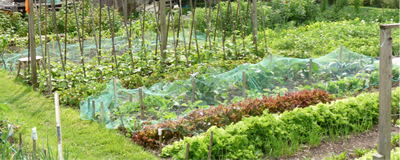
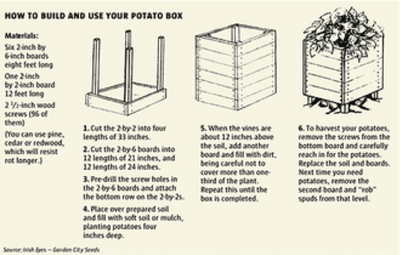
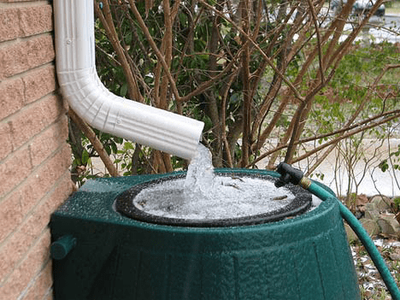

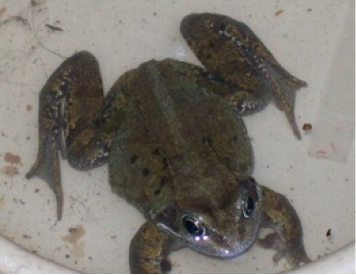

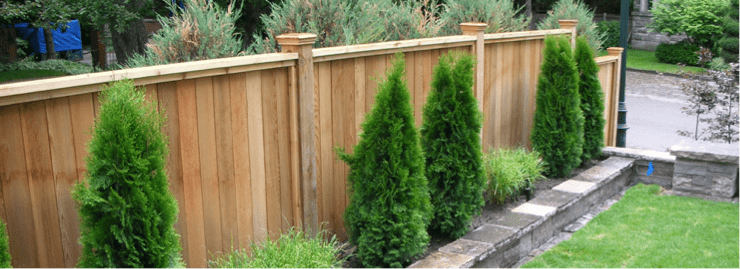
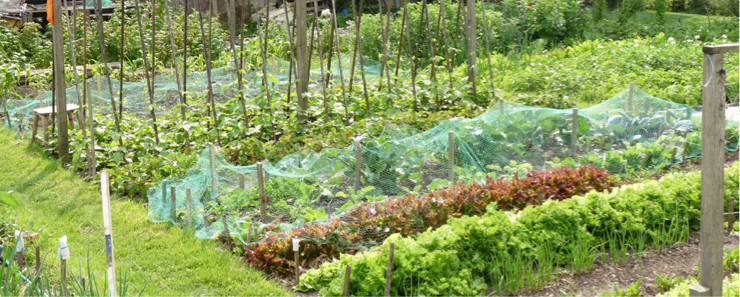
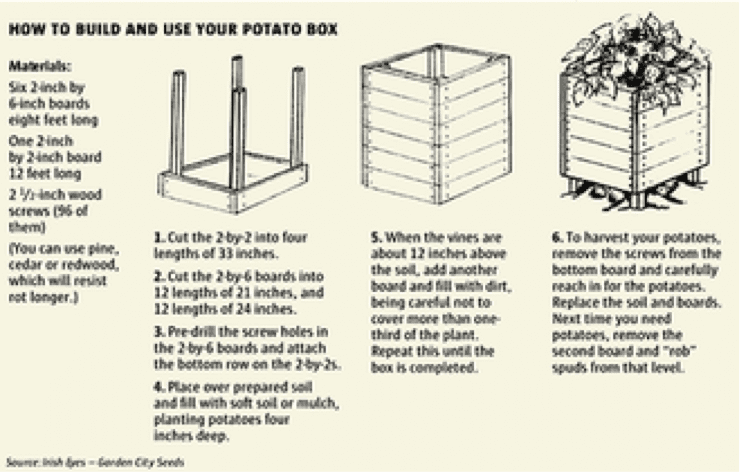


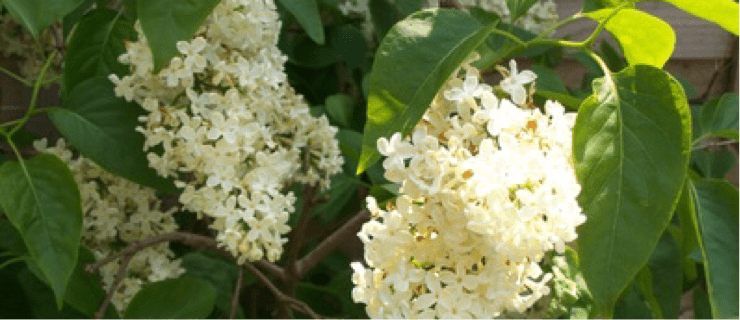

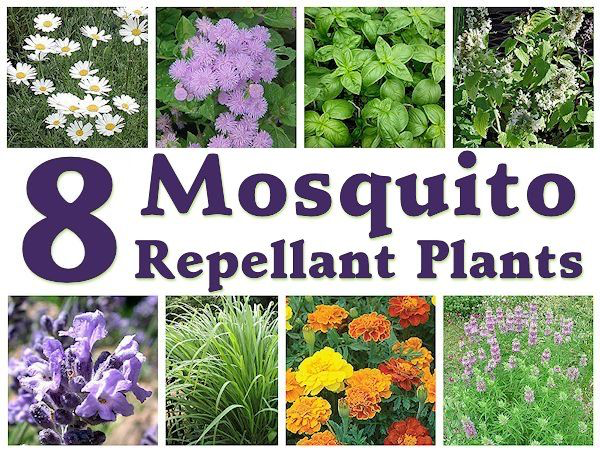
 RSS Feed
RSS Feed




